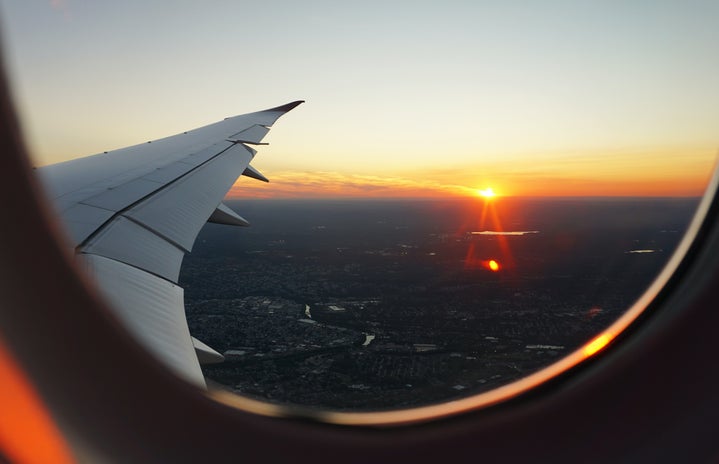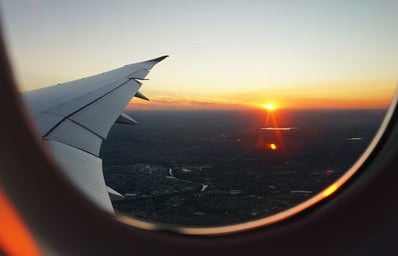Like most people, I love travelling and the opportunity it gives me to explore new places and enrich myself in new cultures and different histories. Travelling as a student, however, needs to be budget friendly. This was part of the reason that attracted me and my boyfriend to visit Latvia and Estonia over the winter break. Neither of us had even been to any of the Baltic States, nor any of its neighbouring countries. When researching our trip, we found that we were quite ignorant about this region; what languages they spoke, what currency they used and what food they ate. And so, this holiday proved to be an exciting new experience.
Riga did not disappoint from the picturesque images on Pinterest. It is a beautiful city, decorated by colourful Art Nouveau architecture. Simply strolling around is a perfect way to take in all its designs. Various sculptures on top of rooftops are dotted about the city, such as the black cats on the building affectionately known as the Cat House and student reading a book on top of another. The buildings known as The Three Brothers are a small architectural gem. The House of Blackheads, a building originally erected for use of a merchant’s guild, is an impressively ornate building, on the exterior and interior, at the heart of the city. The richly adorned Orthodox Cathedral of the Nativity of Christ is a central feature in the city’s skyline with its golden dome and lavish interior. An ideal way to see the entirety of the skyline is a trip to the Skyline Bar for a rather pricey, but very scenic cocktail. Besides the Cathedral of the Nativity of Christ, which is by far the most impressive, Riga is also home to the Cathedral on Dome Square, as well as St. Peter’s Church and St. Jacobs Cathedral.
Riga doesn’t just offer beautiful buildings, but a rich history too. Latvian history is largely one of invasion and occupation, with that of Nazi Germany and the Soviet Union having lasting impact. The Corner House is a must-see for visitors in Riga. Located in the Old KGB headquarters of Latvia, a guided tour provides vast information on the history of Soviet rule and takes you through the basement prison cells that once housed political enemies of the KGB. To extend your knowledge even further, The Museum of Occupation also provides a wealth of information on Latvia’s wartime experience. As our busy days came to a close we found that the lively Central Market proved one of the best places to try local food with a cheap pint.
Given the size of Riga, many of these activities can be done in the space of a couple days, but if you have a spare day then I would recommend a day trip to Sigulda. Our trip to Sigulda was quite a surprise as we had planned to try out bobsleighing, a popular activity for tourists there, we instead found ourselves stumbling across the Luge world cup. After watching some amazingly skilled people speedily sliding down a track of ice, we visited the castle in Sigulda which as the sun set offered great views of the surrounding countryside.
Tallinn, Estonia’s capital, was similarly quiet to Riga and even smaller but was a charming destination with its snow-covered medieval walls and cobbled streets. I highly recommend joining a free walking tour. Our energetic guide showed us the main points of interest in the city whilst providing a myriad of information. Similar to the Cathedral in Riga, the Alexander Nevsky Cathedral in Tallinn was a prominent and beautiful part of the city’s skyline. The medieval walls have various towers and viewing platforms to enjoy sights of the city. We stayed outside the city in a region called Kadriorg. Just a short tram ride from the UNESCO-listed Old Town, Kadriorg is definitely worth a visit. The exquisite Baroque building of the Kadriorg Palace sits among its gardens which I’m sure would be beautiful during the sunnier seasons. Kadriorg Palace also houses the Kadriorg Art Museum which we did not visit. We did, however, visit the nearby Kumu Art Museum which proved to be a hit even with my not so artsy boyfriend. The gallery displayed Estonian art movements, rooted in its history, which similar to Latvia often involved occupation.
Another neighbourhood worth a visit is the hipster area, as our guide called it, also known as Kalamaja. Kalamaja accommodates streets full of colourful wooden houses. Within Kalamaja is Telliskivi Creative District which offers cool bars and restaurants and buildings busy with street art. As the historic fishing port, Kalamaja also houses the popular Seaplane Harbour Museum. This interactive museum inside of a seaplane hangar displays a variety of maritime items including a wartime submarine which you can go inside of.
And so, if for your next holiday you want a short city break that isn’t packed with tourists but still provides stunning architecture and rich history then I would recommend Riga and Tallinn. Combining the two only requires a few hours on a bus and if you feel like two countries just isn’t enough then why not add Lithuania too.


